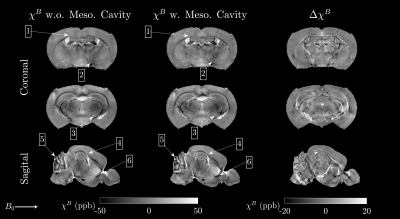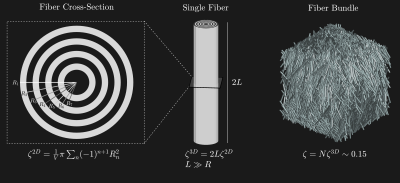Anders Dyhr Sandgaard1, Valerij G. Kiselev2, Noam Shemesh3, and Sune Nørhøj Jespersen1,4
1Department of Clinical Medicine, Center for Functionally Integrative Neuroscience, Aarhus University, Aarhus, Denmark, 2Medical Physics, Department of Radiology, Faculty of Medicine, University of Freiburg, Freiburg, Germany, 3Champalimaud Neuroscience Programme, Champalimaud Centre for the Unknown, Lisbon, Portugal, 4Department of Physics and Astronomy, Aarhus University, Aarhus, Denmark
1Department of Clinical Medicine, Center for Functionally Integrative Neuroscience, Aarhus University, Aarhus, Denmark, 2Medical Physics, Department of Radiology, Faculty of Medicine, University of Freiburg, Freiburg, Germany, 3Champalimaud Neuroscience Programme, Champalimaud Centre for the Unknown, Lisbon, Portugal, 4Department of Physics and Astronomy, Aarhus University, Aarhus, Denmark
The local Larmor frequency depends on the microstructural organization of magnetic susceptibility. By measuring the fiber orientation distribution function from diffusion imaging, we show how the susceptibility can be determined without sample rotation.

Figure 3: Model fits of $$$\chi^B$$$. To the left, $$$\chi^B$$$ is fitted without the mesoscopic contribution corresponding to classical QSM. In the middle, $$$\chi^B$$$ is fitted with the mesoscopic contribution using $$$p_{2m}$$$ estimated by diffusion. To the right, the susceptibility difference $$$\Delta\chi^B$$$ is plotted. Visible changes are numbered: 1,4. Corpus callosum 2. Striatum 3. Optical tract 5. Cerebellum 6. Anterior Commisure

Figure 1: Model overview of fiber bundles. A bundle consists of long cylinders of different orientations. Each fiber may be constructed by several concentric layers. $$$\langle\Omega\rangle_k$$$ is averaged over all the interstitial bi-layers including the intra- and extra-axonal space. For simulations, the bundles are packed by randomly packing cylinders. Cylinder orientations are randomly selected up to a chosen cut-off in polar angle. The position is randomly chosen until a non-overlapping placement is found. A total volume fraction around 15% can be achieved in this way.
